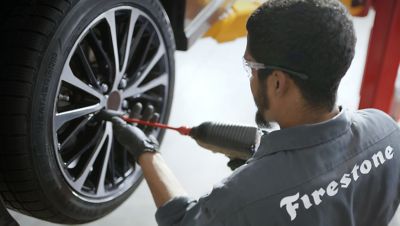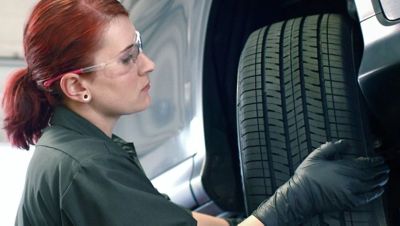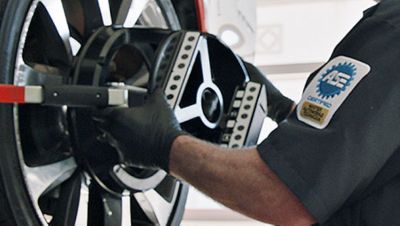FREE WITH THIS TIRE PURCHASE

Tire Mounting

Lifetime Tire Rotation

Alignment Check
Features & Benefits
Bridgestone Turanza QUIETTRACK
3D FULL-DEPTH SIPES
on ALL ribs for enhanced snow traction and improved wear throughout the tire's limited mileage warranty period
IN-GROOVE RIDGES
to help prevent high-frequency noise and provide snow traction
QUIETTRACK TECHNOLOGY PACKAGE
combines precisely tuned and tested enhancements in the tread to help dampen road noise
OPEN SHOULDER SLOTS
for enhanced water evacuation from contact patch under wet conditions
Bridgestone Turanza QUIETTRACK Specifications
80K Miles
General Specs
Vehicle Type
Car & MinivanTire Size
245/45R18Run Flat
NoLoad Index
96 (1565 lbs)Sidewall Styling
Black Letter/Black WallQuality Ratings
Where to Locate a UTQG Rating and What It Means The UTQG rating is on a tire's sidewall and features number and letter grades. The number is the treadwear grade, and the letters are the traction and temperature grades.
TREADWEAR grades tire wear. For example, if a tire's grade is 150, it lasts 1.5 times longer than a grade 100 tire in controlled conditions. Real-world tire wear can differ due to driving habits and road features, climate, and service routines.
TRACTION rates wet braking potential. Traction grades from highest to lowest are AA, A, B, and C. Grades indicate stopping ability of tire on a wet surface, but does not represent traction capability on ice or snow surfaces. TEMPERATURE grades heat resistance potential. The temperature grades are A (the highest), B and C, which represents the tire's ability to effectively dissipate heat at high speeds.
Remember:
- Manufacturers assign UTQG grades, not the government.
- All passenger car tires must comply with applicable laws in addition to these grades.
- Use UTQG grades only to compare tires within, but NOT among, brands.
- UTQG grades don't predict mileage or overall quality.
- UTQG isn't a safety measure.
- Tire selection based on only UTQG ratings may not satisfy your driving needs.
- One tire brand cannot be considered superior to another brand based solely on UTQG grades.
- UTQG grades are not required for snow tires, light truck tires and maximum traction tires.
- UTQG grades are not mandatory in Canada.
Traction Rating
A ( Second highest )Temperature Rating
A ( Highest )Treadwear Rating
800WARRANTIES FOR THIS TIRE
WARRANTIES FOR THIS TIRE
80,000 MILE LIMITED WARRANTY
All warranties are limited to original purchaser on originally installed vehicle. See each warranty at your nearest Firestone Complete Auto Care Store for details and restrictions.
*When you purchase four tires **Price dependent on tire size and geographical location.
90 DAY BUY & TRY GUARANTEE
If you're not completely satisfied with your eligible Bridgestone or Firestone brand tires, the tires can be returned to the location where they were originally purchased within 90 days of purchase for an exchange.
PERFORMANCE
Bridgestone Turanza QUIETTRACK
Search For Tires
Tires For You
Add any of these similar tires to compare to the Bridgestone Turanza QUIETTRACK

